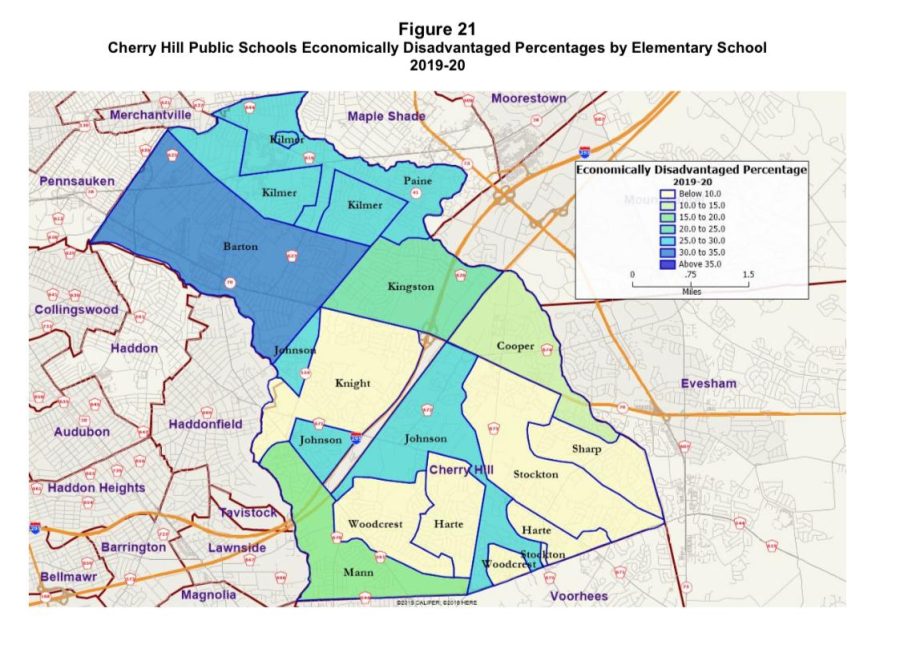Discipline and Economic Disparities: Cherry Hill School District’s Geographic Divides
In April 2022, the Cherry Hill Public Schools released the Hannover Report, finding that students of color or students with limited English proficiency (LEP) or disadvantageous economic situations are more likely to have a school disciplinary infraction.
Data from the report revealed that Black and Hispanic students, who are 22% more likely to receive a disciplinary infraction, are also 11% more likely to receive a suspension. It additionally revealed that 45% of Hispanic students and 40% of Black students qualify as economically disadvantaged and that 58% of LEP students qualify as economically disadvantaged in comparison to 19% of non-LEP students.
What causes the disparities between Black and Hispanic students with White Students is not entirely certain. Geographical divides, however, may provide one potential reason; indeed, most Black students attend the same five elementary schools: Kilmer Elementary School, Barton Elementary School, Johnson Elementary School, Cooper Elementary School, and Woodcrest Elementary School. Most Hispanic students attend Johnson Elementary School, Barton Elementary School, Paine Elementary School, Kilmer Elementary School, and Kingston Elementary School. Interestingly, Barton Elementary School, Johnson Elementary School, Kilmer Elementary School, Kingston Elementary School, and Paine Elementary School have the highest percentage of economically disadvantaged students.
Kilmer Elementary School, Barton Elementary School, and Johnson Elementary School appear on all three of those lists and also exclusively or partially have students coming from the West Side of Cherry Hill. Of all of the elementary schools mentioned in the three lists, 5 out of 7 of them are located in regions where students hail exclusively or partially from the West Side.
With this data in mind, it seems that a substantial correlation between race, income and district discipline exists within the Cherry Hill public school system.
These types of trends are longstanding and are seen nationwide. In the Department of Education’s Civil Rights Data Collection (CDRC) reports based on American public schools from 2014 to 2018, for example, Black and Hispanic students were constantly disproportionately privy to discipline infractions, with the proportion of suspension and expulsion of Black students in the 2017-2018 school year remaining at 3 times their enrollment.
Perhaps Cherry Hill Township follows the trend of the rest of the nation in terms of racial and economic discipline inequality, which should potentially not come as a surprise. Yet it is no less acceptable here in our city than it is in other areas of this country. Through increasing standards of education, support for low-income households, and generational progress, these trends may begin to correct themselves, both in Cherry Hill and in the United States.

Gia, a Print Editor-In-Chief, loves stargazing, asking questions to strangers, and wandering in bookstores. Some of her favorite things include The Marginalian,...

Asher Boiskin is a senior and one of Eastside’s Online Editors-in-Chief. He loves participating in Model United Nations conferences, reading nonfiction,...

Currently a senior at East, Enis Ercan loves all things history and is the vice president of East's History Club. Aside from writing for Eastside, biking,...









